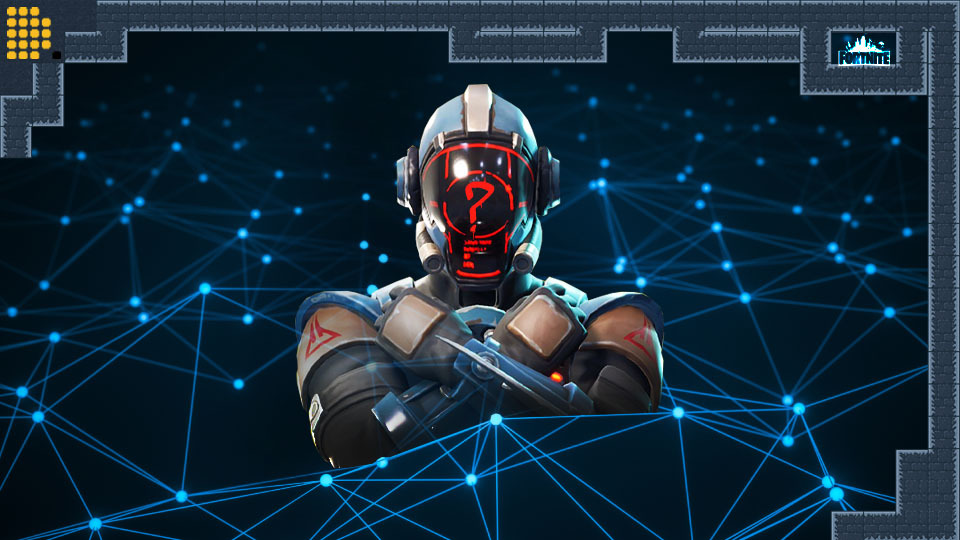
- Blockchain technology enables out-of-the-box thinking. Video games have concrete boundaries, beyond which in-game things don’t have a right to exist. Blockchain can become a portal between the in-game world and the real one.
- In this case, a wallet or third-party exchange is just a temporary vessel for tokenized in-game items, metaphorically speaking, a limbo for digits.
- Furthermore, blockchain can be the “lingua franca” between different games, if the developers accept NFTs as the common standard. Imagine transferring your items from Fortnite to Battle Breakers and back.
- Fortnite can benefit from blockchain adoption because it has an items shop with outfits, harvesting tools, wraps, emotes, and so on. These in-game things can be tokenized.
- If Epic Games considers it redundant, there are Fortnite counterparts brewing on the blockchain, such as Light Nite.
Despite not being a new game genre, battle royales boomed several years ago with the release of PlayerUnknown’s Battlegrounds, also known as PUBG. This is a common trend among hyped things: being underground for some time until favorable circumstances appear on the horizon. This rule is more approachable regarding entire phenomena than exact projects themselves. For instance, PUBG was followed by Fortnite, Apex Legends, and even Fall Guys, which is the ideological successor but in another setting.
Now, we are experiencing a new cycle in gaming history – blockchain. Of course, crypto games are still a very young field. However, with an NFT- based project being presented at E3, the biggest gaming conference, the indication is that a new trend might be just around the corner. Furthermore, since new generation consoles were released a year ago, the gaming community needs a new object of satisfaction.
Fortnite is Better for Blockchain Than PUBG
If we compare two main rivals in the battle royale game genre, the main difference lies in their distribution form, omitting cosmetic features, of course. PUBG is the game you purchased once as a retail item. Oppositely, Fortnite is a free-to-play game with internal purchases. This doesn’t mean being entirely play-to-win but just having unique skins and other items for sale. The in-game currency, Fortnite V-Bucks, are available for purchase with fiat currency. That’s why it’s a perfect candidate for becoming tokenized, like Smooth Love Potion in Axie Infinity.
Sponsored
On the other hand, tokenization alone cannot bring many benefits as the two main purposes of usage will remain; earning and spending. In order to have valued currency, we need to provide the ecosystem for its circulation, which means a marketplace with NFT items.
It will require Epic Games bringing outfits, harvesting tools, wraps, and emotes onto a blockchain. As we know so far, there is no cheap way to make an NFT as it’s usually a part of one Ethereum.
Why are NFTs Different From Current Items?
Blockchain and particularly NFTs give the possibility of true ownership. Now, when you buy any item, it stays inside the game. It’s not you who own the purchased in-game items. In the case if a game is shut down, you lose all your investments. Metaphorically speaking, blockchain provides the possibility of moving from gaming communism to capitalism.
Sponsored
Blockchain technologies give the opportunity to bring items beyond the confines of in-game ownership. Games have concrete boundaries, out of which, in-game things don’t have the ability to exist. Consider blockchain as a portal between the in-game world and the real one.
Tokenized items, a.k.a. things on the blockchain (NFTs) create the possibility of transmitting items from a game directly into your wallet without losing their value. The wallet in this case is just a temporary vessel, a limbo for digits.
Thus, when you buy something in the item shop, you can use it as you usually do as well as withdraw it from the game, swap it on an exchange, or even auction it on an external NFT marketplace if you consider it rare enough.
Blockchain Gaming Doesn’t Live by NFTs Alone: Epic Games Multiverse
Technologies do not stay still. Breeding and marketing mechanics are being overused already in the crypto gaming world. That’s why we are observing fewer projects like CryptoKitties, CryptoPunks, and Bored Apes appearing at the top of OpenSea, the biggest marketplace of the crypto world.
The probable next trend will be multiverses. For example, some crypto games with interoperable blockchains can hold events inside each other’s universes. Most recently, Zed Run had an event in Decentraland. The viewers were able not only to watch digital horse races but also visit the online art gallery of Zed NFTs and chat personally with the Zed Run community.
Now, just imagine the Epic Game multiverse in this way. This means not only skins available to transmit from Fortnite to Battle Breakers but creating a possibility of one common 3D virtual space where you can enter after having a round in Fortnite, swap several abilities with your friend who is playing Battle Breakers and jump back into the battle royale surprising your opponents.
In theory, this is a multiverse with not only an economic ecosystem, but interoperable gaming mechanics; if not fully working ones, using some optional module systems at least.
On The Flipside
- This may sound like an oxymoron, but the traditional gaming industry is quite conservative. It’s hard to convince big gaming studios to make a revolution. Usually, it’s done by small indie studios that are not afraid of experiments.
Fortnite is performing well enough in corporate matters. There is no reason to change things that work properly. There is a possibility for Epic Games to explore blockchain technologies in one of their future projects. However, Epic Games is more renowned for polishing already existing ideas rather than being a pioneer, as we can see from PUBG and Fortnite.
If you are contemplating playing Fortnite should it get play-to-earn features, let’s consider some other options:
Fortnite Counterparts on Blockchain
There is a full list of blockchain projects with the genre mark “battle royale.” The most famous among them are Blankos Block Party and Thetan Arena, which are ideological successors of Fall Guys and League of Legends accordingly. We will cover these projects in future articles.
However, the closest crypto game to Fortnite is Light Nite from a studio with a promising name, Satoshi’s Games. Even the name of the project hints on an ideological closeness to Fortnite. The game features much loved mechanics such as big maps, skins and cosmetics, and survival, of course.
On the other hand, there are some differences from the original. For example, the visual style is more polygon-inspired than cartoonish. However, the main feature is getting game rewards in satoshis (the smallest unit of Bitcoin).
According to the official website, the game development is on the road to beta-release. Light Nite is available in early-access for $20.
Third Party Solutions
In one of the latest DailyCoin interviews, we talked to the creator of this kind of project, Hoard. They provide “the bridge” between the traditional game industry and GameFi in the aforementioned method of tokenization. However, it’s the one provided not by game developers but by a third party.
This process will allow games to truly own the items they are spending real money for. This means not only the possibility to sell but also exchange items with other players outside the game “box.”
Furthermore, blockchain can be the “lingua franca” between different games, if the developers accept NFTs as the common standard.
It really feels like singularity is fast approaching!
Why You Should Care?
Once a big enough gaming studio implements blockchain in their next game-hit, the new trend is launched in the gaming world. Of course, the blockchain industry is already large and independent. Moreover, more and more indie developers are looking into the direction of blockchain and its features. However, the great boom is about to happen, and we need to be prepared in order to keep up with the pace.
